Related Research Articles

Médecins Sans Frontières, also known as Doctors Without Borders, is a charity that provides humanitarian medical care. It is a non-governmental organisation (NGO) of French origin known for its projects in conflict zones and in countries affected by endemic diseases. The organisation provides care for: diabetes, drug-resistant infections, HIV/AIDS, hepatitis C, tropical and neglected diseases, tuberculosis, vaccines and COVID-19. In 2019, the charity was active in 70 countries with over 35,000 personnel; mostly local doctors, nurses and other medical professionals, logistical experts, water and sanitation engineers, and administrators. Private donors provide about 90% of the organisation's funding, while corporate donations provide the rest, giving MSF an annual budget of approximately US$1.63 billion.

The Canadian Red Cross Society is a Canadian humanitarian charitable organization, and one of 192 national Red Cross and Red Crescent societies. The organization receives funding from both private donations and from Canadian government departments.
The British Red Cross Society is the United Kingdom body of the worldwide neutral and impartial humanitarian network the International Red Cross and Red Crescent Movement. The society was formed in 1870, and is a registered charity with more than 17,200 volunteers and 3,400 staff. At the heart of their work is providing help to people in crisis, both in the UK and overseas. The Red Cross is committed to helping people without discrimination, regardless of their ethnic origin, nationality, political beliefs or religion. Queen Elizabeth II was the patron of the society until her death on 8 September 2022.
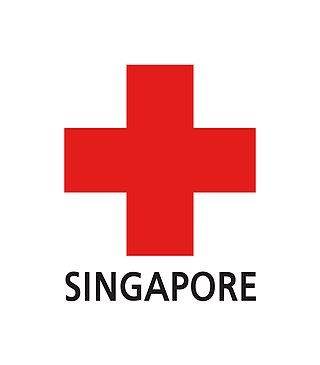
The Singapore Red Cross (SRC), formally the Singapore Red Cross Society, is a humanitarian aid and community services charity in Singapore. The SRC is a national member of the Federation of Red Cross and Red Crescent Societies (IFRC) and International Committee of the Red Cross (ICRC) and forms a part of the International Red Cross Movement.
The Cyprus Red Cross Society is the only Red Cross society in Cyprus recognised by the International Red Cross and Red Crescent Movement. The Headquarters of the Society are located in Nicosia.

Turkish Red Crescent (Turkish: Türk Kızılay or Kızılay is the largest humanitarian organization in Turkey and is part of the International Red Cross and Red Crescent Movement.

Medair is an international non-governmental organisation (INGO) whose purpose is to relieve human suffering in some of the world's most remote and devastated places. Medair aims to assist people affected by natural disasters and conflict to recover with dignity through the delivery of quality humanitarian aid.
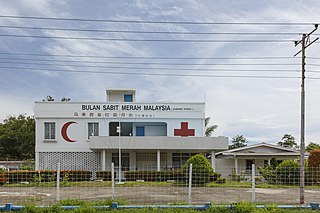
The Malaysian Red Crescent Society (MRCS) is a voluntary humanitarian organization that seeks to promote humanitarian values, as well as provide service and public education in disaster management, as well as healthcare in the community. It is part of the International Red Cross and Red Crescent Movement.

Pakistan Red Crescent Society, is a humanitarian organization that provides emergency medical and relief services in Pakistan. The organization was founded on 20 December 1947 after Pakistan's independence by an order called The Pakistan Red Cross Order, issued by Muhammad Ali Jinnah, as Governor General of Pakistan. He became the founding president of the Society. It was later renamed the Red Crescent Society or the Red Crescent Order. Its national headquarters are in Islamabad.
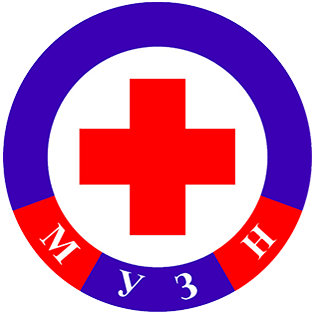
The Mongolian Red Cross Society is the largest humanitarian organization in Mongolia. It was established in 1939 as part of the International Red Cross and Red Crescent Movement and is an auxiliary to the Mongolian Government.
The Swiss Red Cross, or SRC, is the national Red Cross society for Switzerland.
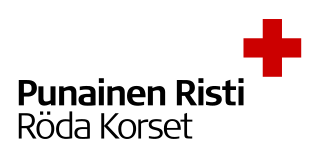
The Finnish Red Cross is an independent member of the International Federation of Red Cross and Red Crescent Societies, which is one of the biggest and best-known international organisations in the world and in the field of humanitarian aid. FRC has over 90,000 members and around 45,000 active volunteers in Finland. FRC consists of 12 regional chapters and 550 local branches throughout the country. The current General Secretary is Ms. Kristiina Kumpula. At the end of 2006, the FRC employed 1,168 people, of which 136 worked at the headquarters in Helsinki.
RedR is an international NGO whose stated mission is to “rebuild lives in times of disaster by training, supporting, and providing aid workers to relief programmes across the world.” It was originally an acronym for Register of Engineers for Disaster Relief, although it is no longer used as such.
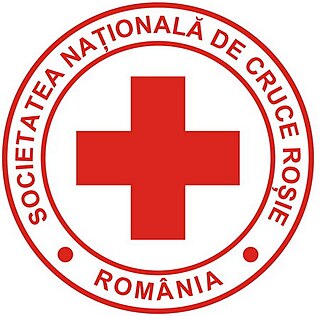
The Romanian Red Cross (CRR), also known as the National Society of Red Cross from Romania, is a volunteer-led, humanitarian organization that provides emergency assistance, disaster relief and education inside Romania. It is the designated national affiliate of the International Federation of Red Cross and Red Crescent Societies.
Africa Humanitarian Action is a non-governmental organization that provides relief services to countries in Africa. It was founded by Dr. David Zawde in 1994 in response to the Rwandan genocide.
The Somali Red Crescent Society (SRCS) is a non-political, independent humanitarian organization in Somalia and is part of the International Red Cross and Red Crescent Movement.
Relief International is a humanitarian non-profit agency that provides emergency relief, economic rehabilitation, and development assistance services to vulnerable communities worldwide. Relief International UK is non-political and non-sectarian in its mission. It is based in Washington, D.C. and London.
The Maldivian Red Crescent (MRC) is an independent, volunteer, non-profit, humanitarian organization established in the Maldives by virture of the Maldivian Red Crescent Act Law No: 7/2009

The Catholic Medical Mission Board (CMMB) is an international, faith-based NGO, providing long-term, co-operative medical and development aid to communities affected by poverty and healthcare issues. It was established in 1912 and officially registered in 1928. CMMB is headquartered in New York City, USA, and currently has country offices in Haiti, Kenya, Peru, South Sudan, and Zambia.
References
- ↑ Adela de Allwood, From disaster relief to development, Henry Dunant Institute, 1988, p. 39